Some of Enbridge’s oil tanks are decorated with illustrations of lovely Canada Geese in flight. Let’s just hope they don’t land in the tar sands tailing ponds.
Almost all the largest oil companies are currently mining and drilling in the Boreal forest and wetlands where more than half of the birds of North America nest. According to The Boreal Forest Region: North America’s Bird Nursery the Boreal Forest is the preferred breeding ground (i.e. they do over 50% of their breeding there) of 96 Western Hemisphere bird species. And a total of 276 species breed within the area when you count species that do at least 5% of their breeding there.
Here’s the bad news: according to the National Resources Defence Council’s December 2008 report, Danger in the Nursery: Impact on Birds of Tar Sands Oil Development in Canada’s Boreal Forest, over the next 30 to 50 years between 6 million and 166 million more birds could be lost as a result of tar sands development, this in addition to the ever-increasing number of species already declining at alarming rates.
Let’s be clear: tar sands are not oil. They are a mixture of approximately 10% bitumen mixed with sand, clay, silt, and water. Bitumen is “what a desperate civilization mines after it’s depleted its cheap oil.” (Tar Sands, Andrew Nikiforuk, 2010) Getting it from its raw state to a state in which it will flow through a pipeline takes a mind-boggling amount of fresh water, a complex network of roads, pipelines, well pads, compressor stations, energy generation facilities, and tailing ponds. It means the devastation of the forest covering the tar sands along with every living thing that called that forest home. Whether the tar is extracted by open-pit mining using 400-ton 3-story high trucks and electric shovels worth $15 million each, or by ‘in situ’ drilling, the result is the same: massive habitat loss and fragmentation, contaminated air and water, loss of huge volumes of water from wetlands, lakes, and rivers, and greenhouse gas emissions triple those of conventional oil drilling. Global warming is just one of the nasty results.
The Boreal Forest, traditionally the planet’s largest storehouse of carbon, ‘the lungs of the planet’, has become one of the fastest growing sources of greenhouse gas emissions on the planet. Global warming affects birds in various ways. First, since birds time the beginning of their migration northward to coincide with seasonal changes in daylight (which remain constant, in spite of climate change) they may arrive in their ‘nursery’ to find their traditional food sources (eg insects) already hatched and long gone. That means no food to feed the babies. Bye bye birds.
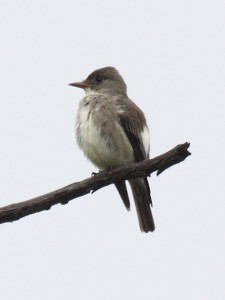
The Olive-sided Flycatcher, designated Near Threatened by the IUCN,
breeds in the Boreal Forest. (Photo by Dominic Sherony. CC license.)
Secondly, some birds hoard food to get through the winter and to have a ready supply for their young in early spring. Warmer temperatures mean they may find their cached food spoiled when they arrive because it has not had a chance to freeze.
Finally, the boreal wetlands, annual breeding grounds for 12 to 14 million ducks, including the Bufflehead, are becoming drier and drier as global warming continues.
But the global warming exacerbated by the development of the tar sands is just one of the problems birds face. Another problem is the tailing ponds. These are not pastoral ponds à la Walden. Nor any type of tail that may stir up warm and fuzzy feelings.
They are, instead, massive toxic soups of bitumen, salts, and poisonous acids combined with water, sand, silt, and clay. Tailing ponds are deadly for waterfowl. In 2008, for example, 1600 ducks, including migrating Buffleheads, landed on a tailing pond owned by Syncrude. They all died. Birds fly over a “pond” and think they see water. So they land, expecting a much needed rest and a good drink. They dive down, hoping to find some tasty morsels. And they never come back up. Non-diving birds that land in tailing ponds are covered in oil. Their feathers lose their insulating properties, and the birds slowly die.
“Every year the ponds quietly swallow thousands of ducks, geese, and shorebirds as well as moose, deer, and beaver. Although Canada’s Migratory Birds Convention Act says it’s against the law to kill birds by sliming them with bitumen or other toxic waste, shit happens in the tar sands.” (Nikiforuk, Tar Sands) According to the Danger In The Nursery report, in 2008 the annual bird mortality resulting from tailings ponds ranged from 8,000 to well over 100,000 birds.
The solution? Stop tar sands development. Get over our addiction to oil. Start putting all those billions of dollars into the development of alternate sources of energy, such as wind, solar, geothermal power. We need to do this not just for the birds but for all the species that share the planet. Our grandchildren included.



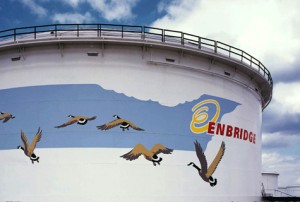
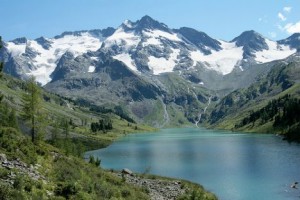
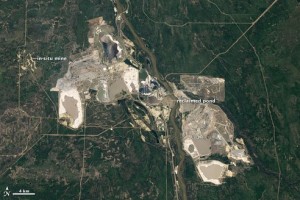
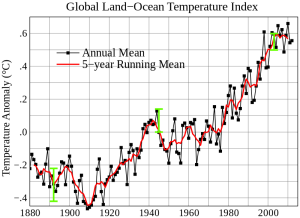
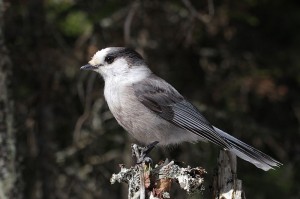
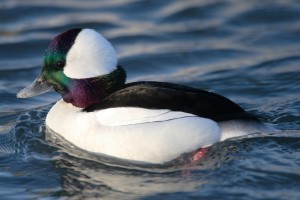
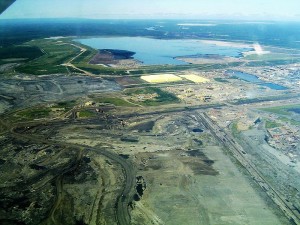
Thanks kindly for sharing this information. We all need to do whatever we can to stop the further development of Canada’s tar sands. I’d like to see the money that the Canadian government gives to multinational oil companies in the form of subsidies spent in the development of alternate sources of energy – wind, solar, geothermal, whatever works. As many other countries are doing. For the birds, the people, the planet.
Pingback: Blog Birding #128 « ABA Blog
Hi Olive. It seems that Bufflehead populations are currently stable in spite of what’s happening in the boreal forest. But that could change. They do nest elsewhere as well, usually in abandoned Northern Flicker nests.
Laura. So good to hear from you – all the way from England! Yes, this is shameful. You can go to the Dogwood Initiative site – http://www.dogwoodinitiative.org – to sign the petition against tankers along the BC coast, which is intimately linked to tar sands development. Can’t have one without the other.
I certainly have noticed an alarming drop in waterfowl wintering at White Rock. I don’t have an accurate count but this year there was only one Bufflehead. I had not connected this to oil sand excavation.
Olive
Bravo Sharon! Where is the petition, where can I sign. I am going to look now. This is so shameful, it is sickening and I feel ashamed as a Canadian when I read this. I knew the tar sands were bad for people (ie. folks in Fort Chipewyan, Alberta, but didn’t know it was so devastating for wildlife. Of course it is. Thank you for writing this. I’ve posted it on my FB wall. I hope you get a lot of action from this. Laura x